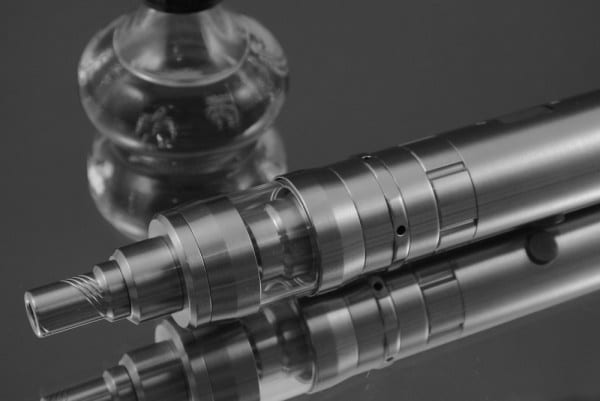
Marijuana lawsuits: A Thought Experiment
Company Y has finally done it; they have managed to produce a vaporizer that yields triple the output of a normal vape while reducing the cost by one half. As an added bonus, Company Y’s vaporizer includes a new and proprietary filtering system that completely removes any and all toxins that would otherwise have been produced by traditional, vape powered chemical
reactions.
After six months of incredible sales and countless interviews with major news publications (and the successful rebuttal of a cannabis trademark infringement suit) , the company’s CEO receives a phone call from their weed attorney with terrible news – a user of the vape was filming himself smoking O’s with his new vape when it exploded. The explosion was apparently due to a malfunction of the company’s proprietary computer chip in the filtering system. The damaged individual, who has scarring all over his face with the possibility of vision loss, is now threatening to launch a series of marijuana lawsuits against Company Y. The CEO frantically asks his weed lawyer, “how much sleep should I be losing over this?”
Marijuana lawsuits: Fundamentals of Tort Law
In common law jurisdictions, a tort is a “wrong” committed by person A, which affects person B; an individual to whom person A owes a civil duty. Critically, torts are distinct from criminal wrongdoings in that the latter involves a breach of a duty owed to society at large. Harm done to society, rather than the individual, is of course why state prosecutors rather than commercial marijuana lawyers bring criminal lawsuits. As we shall see, while there are several theories of liability under tort law, the most common are negligence-based lawsuits. We will briefly explore what a negligent tort consists of before addressing a product liability lawsuit, the tort claim Company Y will most likely be subjected to in court.
Elements of a Negligence Tort
The elements of negligence include:
1) Duty
2) Breach of duty
3) Causation (Cause in fact, and proximate cause)
4) Harm suffered by plaintiff
Formulaically, to prevail under a claim of negligence, the plaintiff must prove that the defendant owed the plaintiff a duty of care, the defendant breached that duty by his omission or commission of an act, the act was both the actual cause and immediate cause of the harm, and there was in fact harm suffered by the plaintiff.
Naturally, there is an enormous amount to say about each element involved in a negligence case. However, to better understand how this system may apply to the pending lawsuit against our vape company, let’s run through a potential application of the elements.
The vaporizer company owed a duty of care to the individual because they produced and sold him one of their products. The individual will argue that the vaporizer company breached its duty of care (this will be the most litigious part of the case) by doing “X” – here, the individual/plaintiff will have to show how the company breached the duty. The vaporizer company’s breach both directly and proximately caused the injury to the individual. The harm suffered by the individual included scarring and vision loss.
Hopefully, it is clear to the readers that the lynchpin issue of a negligence claim is the theory of breach – it is pretty obvious that the company owed a duty of care to the customer and the customer was injured by the company’s product but what precisely did the company do to breach the duty? How did they screw up?
Product Liability – Shifting the Burden of Proof
Our legal system has evolved to recognize that proving breach is often an unfair and nearly impossible task for plaintiffs in negligence cases involving defective products. Can we really place the burden of showing how a company screwed up on
the plaintiff/consumer? Common sense tells us no.
The Elements of Product Liability
In order to remedy this apparent shortcoming of the negligence formula, a new theory of liability has emerged over the years called product liability. Under this tort theory, liability is imposed on the defendant without requiring the
plaintiff to actually prove how the manufacturer/defendant has breached. To prevail, the plaintiff must only show one of the following three things; the product had an “unreasonably dangerous” defect in design (it was by design faulty), it suffered a defect during the course of its manufacturing, the product suffered a defect during handling.
Furthermore and quite critically, the defect must be shown to be the cause of the injury to the plaintiff and the plaintiff must show that it used the product in a reasonable way. For example, if the vape smoker attempted to use the device while submerged under water, he would likely not prevail because it would be unreasonable to use the vaporizer under that circumstance. Finally, the product must be shown to not have been altered in a substantial or material way from the condition that it was initially in when sold by the manufacturer.
In our vaporizer thought experiment, the vape’s computer chip was the dangerous defect, this defect caused the explosion and resulting scaring and vision loss to the plaintiff, and finally, there is no evidence that the vaporizer had been altered from its initial state when produced and sold by the vaporizer company. In short, the victim has quite a compelling legal case indeed.
Legal Remedies to Cure Social Harms
On the most fundamental level, the entirety of our legal system is built on the social objective of eliminating
(if not minimally reducing) interpersonal violence. Laws are in place to ensure a victim can avail himself of a legal, rather than violence-based, remedy. As a derivative of this principle, the primary concern of tort law has been to first determine whether a civil harm has been committed and if that harm should require compensation to the victim. If the court finds that a civil harm has been committed, it will award the victim compensation so that he is not forced to seek it himself through violent actions.
Our thought experiment involving the tortious vaporizing company represents the success and culmination of our
wonderful, albeit flawed, legal system. As to the CEO’s final question to his lawyer, “how much sleep should I
be losing over this?” – well, it turns out quite a bit.






